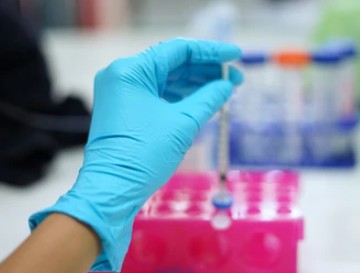
- Home
- PTMs Proteomics
- Peptide Enrichment for MS-Based Analysis
- Hydrophilic Interaction Liquid Chromatography (HILIC)
Immobilized metal affinity chromatography (IMAC) is an affinity purification technique and has been widely used to enrich biological samples for phosphopeptides. Creative Proteomics specializes in peptide separation enrichment for MS-based PTM analysis based on a broad range of separation and enrichment methods, including IMAC.
IMAC has been commonly exploited to enrich phosphorylated proteins and peptides. This affinity purification technique utilizes trivalent metal ions immobilized on a stationary phase to selectively chelate negatively charged phosphate groups of phosphoproteins or phosphopeptides based on the affinity of negatively charged phosphate groups and positively charged metal ions. Currently, a variety of various metal ions are available for phosphorylated peptide enrichment, such as Fe3+, Zr4+, Ga3+, and Ti4+. IMAC enrichment of phosphopeptides is characterized by high selectivity and sensitivity. However, this enrichment technique has the disadvantage that highly acidic non-phosphorylated peptides have an affinity for metal ions and can interact with IMAC resin. While low pH can reduce the binding of non-phosphorylated peptides, it can also reduce the binding of specific phosphorylated peptides. Therefore, enormous effort has been made to improve the efficiency of IMAC-based phosphopeptide enrichment.
 Fig. 1 Schematic process for recombinant protein purification using IMAC affinity columns. IMAC, Immobilized metal affinity chromatography.(Velarde-Salcedo, Aída Jimena, et al, 2021)
Fig. 1 Schematic process for recombinant protein purification using IMAC affinity columns. IMAC, Immobilized metal affinity chromatography.(Velarde-Salcedo, Aída Jimena, et al, 2021)

In general, the IMAC-based phosphopeptide enrichment process consists of three main steps, including incubation of the trypsin digest on an IMAC column, washing the resin with IMAC binding buffer, and enrichment of phosphopeptides at high pH or with phosphate salt conditions. To improve the efficiency of the IMAC approach, we use Ti4+-based resin. Since Ti4+ is highly acidic and signifies a higher affinity toward oxygen. This type of resin can prevent the binding of acidic peptides and is superior to the use of other metal ion-based phosphopeptide enrichment methods. In addition, it is also worth mentioning that a combination of enrichment procedures and appropriate fractionation strategies is necessary in order to reduce the complexity of the samples and increase the depth of PTM coverage. We also offer sequential elution from IMAC (SIMAC) as the complementary strategy for IMAC enrichment. The SIMAC approach combines IMAC and TiO2 enrichment strategies to enrich phosphopeptide in a consecutive manner, which can greatly facilitate the identification of more phosphorylation sites.
In addition to phosphopeptide enrichment service, we also offer acetylated peptide enrichment service, ubiquitinated peptide enrichment service, glycopeptide enrichment service, and histone isolation and enrichment service. Do you have any questions or comments or would like a free quote? Do not hesitate to contact us.
Our products and services are for research use only.